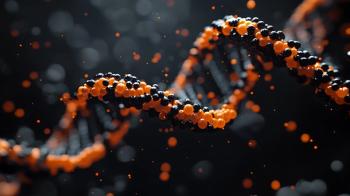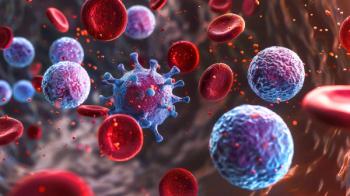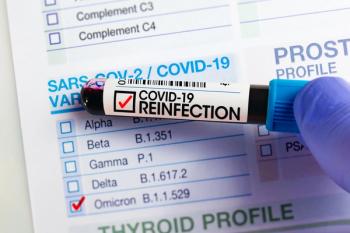
Non-invasive Imaging Technique Shows Greater Detail into Ovarian Cancer Cells
Novel process may identify cancer metastasis at an earlier stage when it may be easier to treat.
Researchers have combined a powerful microscopy technique with automated image analysis algorithms to distinguish between healthy and metastatic cancerous tissue without relying on invasive biopsies for the use of a contrast dye.
In a study published in the journal Biomedical Optics Express, researchers demonstrated the use of multiphoton microscopy combined with automated image and statistical analysis algorithms. This process allowed them to examine the peritoneal cavity, a portion of the abdomen frequently affected by metastatic cancers—especially among patients with ovarian cancer—in freshly excised biopsies. It is the first time healthy and metastatic human peritoneal tissue has been successfully evaluated using the microscopy modality with image texture analysis techniques.
The study authors said this process can identify cancer metastasis at an earlier stage when it may be easier to treat, as methods such as cross-sectional radiographic imaging and white light laparoscopy often fall short in detecting smaller lesions buried within the healthy tissue. The approach could also help reduce bias in interpreting images and complement methods that rely on human expertise, thereby allowing surgeons to identify suspicious or diseased areas directly in the operating room in real-time, according to the study.
Researchers analyzed 41 images acquired from the biopsies, and the technique correctly classified 40 out of 41 images at an accuracy of 97.5%. A total of 11 samples were correctly classified as metastatic, or 100% sensitivity, and 29 of 30 were correctly classified as healthy, or 96.6% specificity.
Multiphoton microscopy works by delivering laser light to tissue, an approach that causes no tissue damage. As different tissue components interact with the laser light, they emit signals that are then retrieved by the microscope to create an image. Once the images are acquired, automated image processing algorithms can be used to reveal unique textural features.
The analysis is based on the components of the tissue, such as cells or collagen, rather than on contrast dyes that have been added to it. This allows analysis of inherent features related to form and function in a noninvasive and nondestructive manner, according to the researchers.
This study was the first time combined microscopy and analysis technique was used in healthy and metastatic human parietal peritoneal tissues, normally replete with collagen, in order to evaluate the micro-structural patterns of collagen fibers and their intermolecular cross-linking signals.
The researchers ultimately found that healthy tissues showed greater variation in contrast and correlation, whereas metastatic tissue images showed more uniformed intensity patterns and smaller fibers.
Although biopsies were used, the study authors hope that the approach can be tailored to work directly on the body without the need for biopsies.
Reference
- Non-Invasive Imaging Method Spots Cancer at the Molecular Level [press release]. OSA website. Washington. Published August 6, 2019. https://www.osa.org/en-us/about_osa/newsroom/news_releases/2019/non-invasive_imaging_method_spots_cancer_at_the_mo/. Accessed August 7, 2019.
Newsletter
Stay informed on drug updates, treatment guidelines, and pharmacy practice trends—subscribe to Pharmacy Times for weekly clinical insights.


















































































































































































































